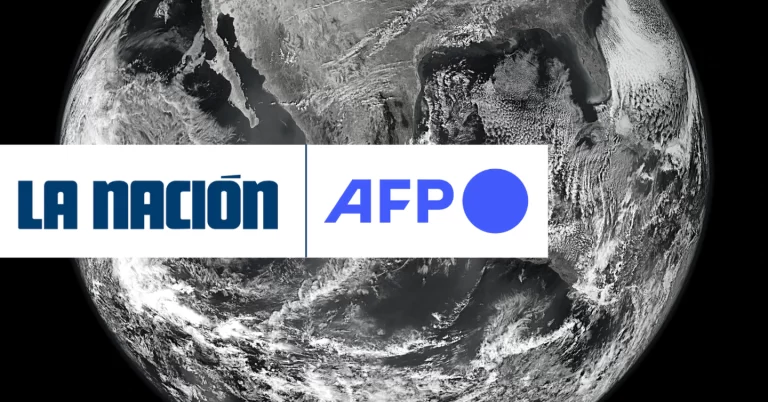
As monsoon storms hit India, women are taking part in an irrigation program in drought-stricken villages, hoping their hard work will end water shortages.
India, the second most populous country in the world, is struggling to meet the water needs of its 1.4 billion people. And the problem is aggravated by climate change.
Few regions of central India are in conditions as harsh as Bundelkhand, where lack of water has forced farmers off their land to work in cities.
“Our elders say that the stream flowed in torrents all year round but today there is not a drop (of water),” laments Babita Rajput, pointing to AFP at a crack in the ground.
The “water crisis” in the region “dried up all our wells,” he explains.
Two years ago, Babita Rajput joined Jal Saheli (“Friends of Water”), an irrigation program that brings together a thousand women volunteers who work in Bundelkhand to rehabilitate the missing water points.
Together, they carry stones and mix concrete to build dams, ponds and dikes that will hold back the June monsoon rains, a season that accounts for around 75% of India’s annual rainfall.
Agrotha village, where Babita Rajput lives, is one of 300 villages where women plan new catchment sites and reservoirs.
According to her, her work has revived half a dozen reserves around her village.
Though not yet self-sufficient, Agrotha residents are escaping the water shortage that 600 million Indians face daily, according to figures from a government think tank.
Water services in the capital, New Delhi, are overwhelmed by demand in summer, with trucks regularly traveling to the slums to supply their inhabitants.
India’s Public Policy Institute, NITI Aayog, forecasts that around 40% of the country’s population may not have access to clean drinking water by the end of the decade.
Irregular rainfall and extreme heat are related to climate change in the Bundelkhand region, affected by several long periods of drought since the beginning of the century.
Sanjay Singh, a civil society activist, trained the women of Agrotha in rainwater harvesting and storage, helping the village regain knowledge lost decades ago when the water – then managed by the inhabitants – became a resource administered by the government.
“But the government does not guarantee access to water for all citizens, especially in rural areas,” he complains to AFP.
Before the irrigation project began in Agrotha, the women had to walk several kilometers every day to try, often in vain, to find a well that was not dry.
In Indian villages, the task of collecting water is traditionally assigned to women. Several of them are subjected to violence from their husbands if they cannot bring home enough, Singh explains.
The drought caused great social changes in the region, pushing men to move to the cities, leaving their families behind. But since its inception in 2005, the Jal Saheli program has helped more than 110 villages become self-sufficient in their water needs, helping to reverse the flow of population.
Srikumar, an elderly woman from the neighboring district of Lalitpur, saw her village transform from a desert of dust into an oasis. With the help of Singh’s charity, she and a dozen other volunteers excavated a tank the size of a football field, which can hold up to three meters of water after the monsoon.
“Things have changed for the better. Now we have enough water, not only for our houses, but also for our cattle,” he says. “Without this well, it would have been very difficult to survive.”
ja/gle/dva/am/dth/mab/zm